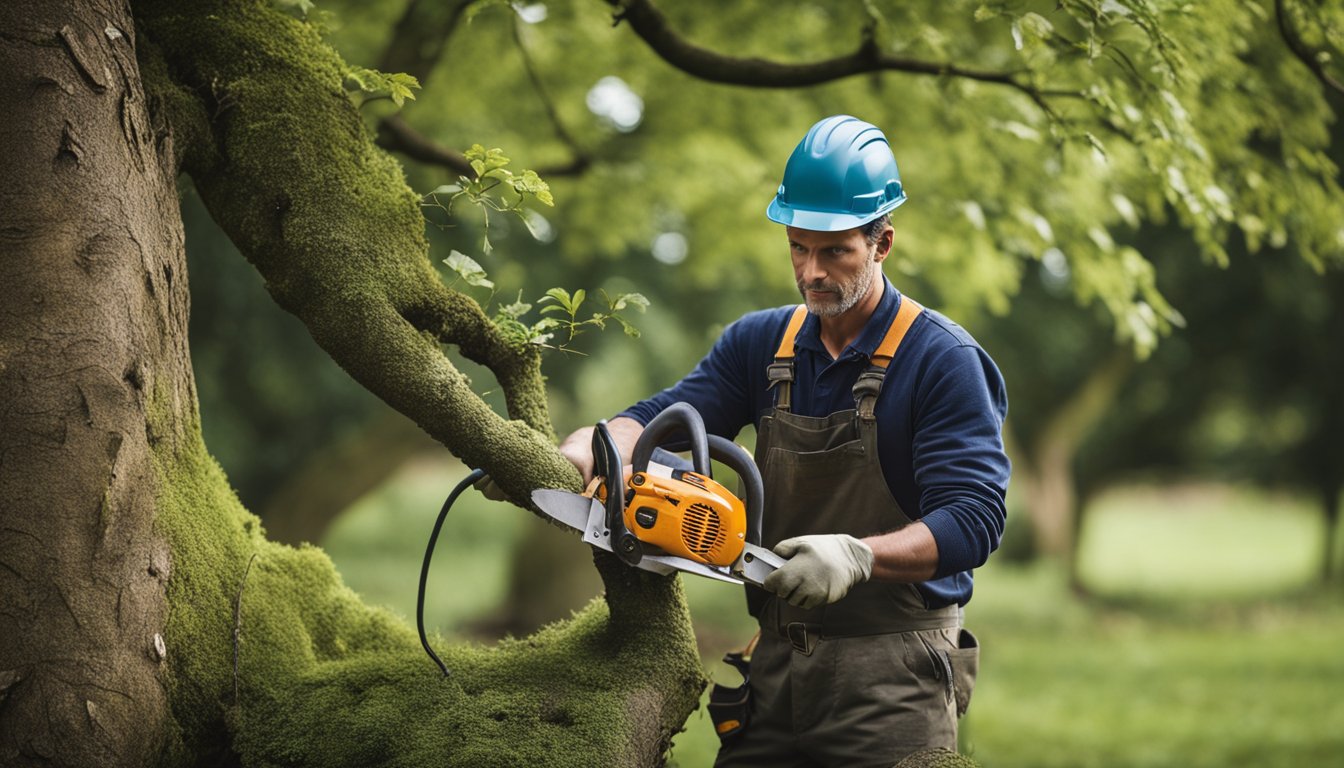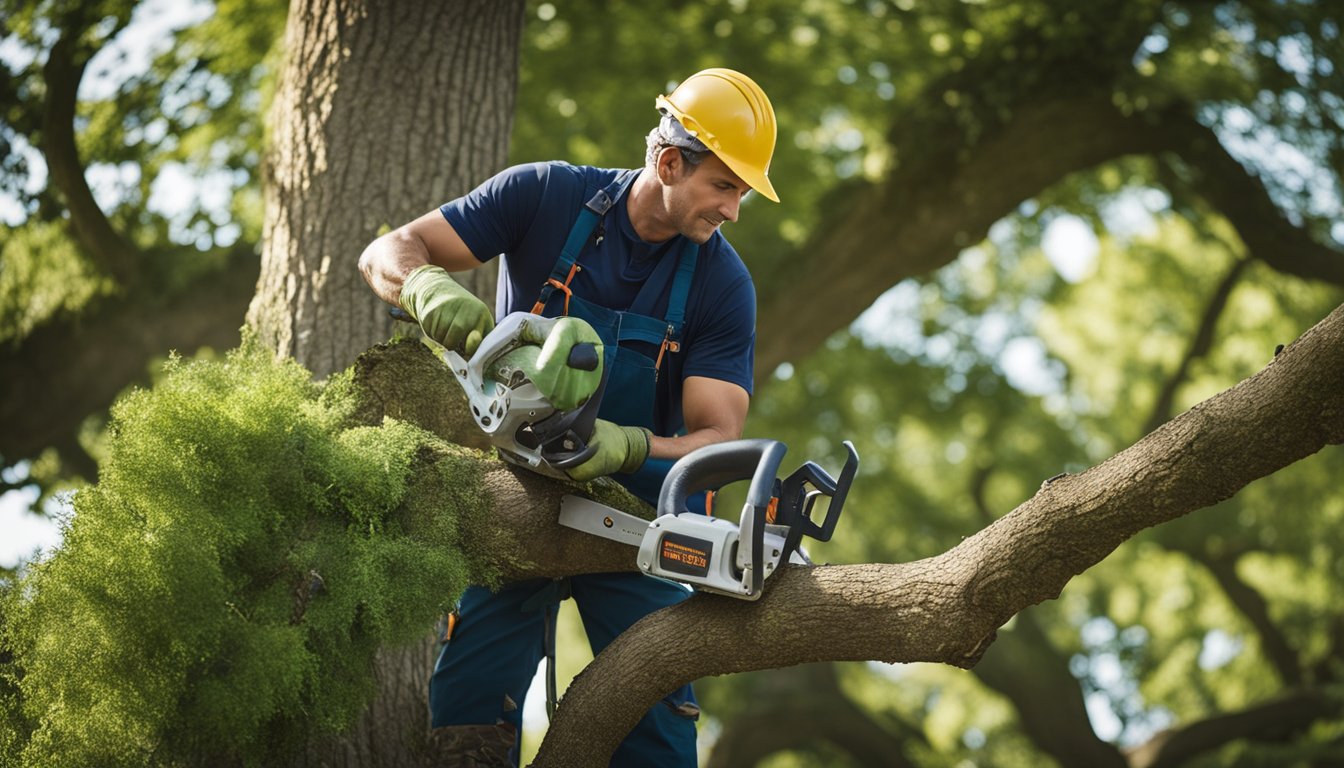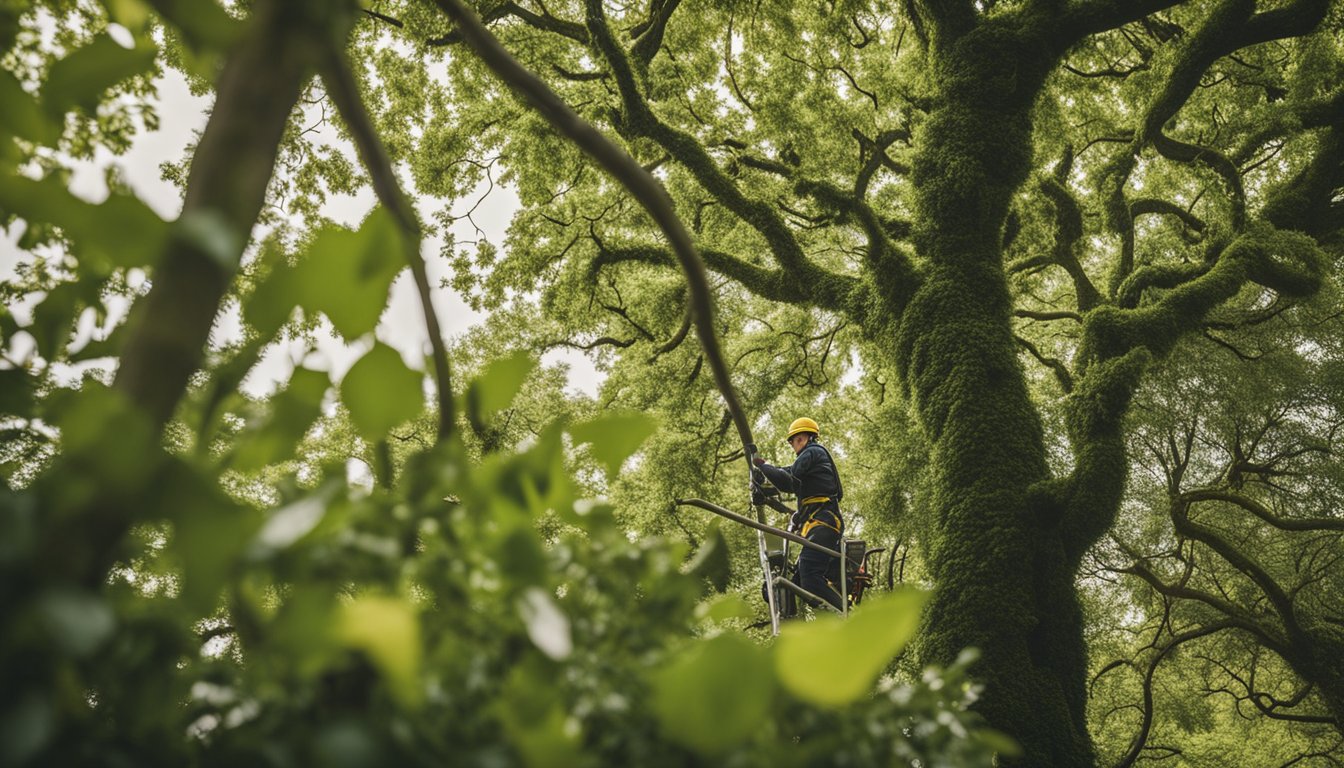Late updated: 27 Jul 2024 14:07
Written by: Emily Thornton
Pruning Techniques For Native UK Trees: Essential Tips and Best Practices
In the heart of every thriving garden or woodland lies the secret of good pruning practices. Native UK trees, such as oak, hazel, and willow, require particular attention to ensure they not only survive but flourish. Pruning is not just about cutting branches; it's about fostering strong, healthy growth while enhancing the landscape and biodiversity they support.

When we prune trees during their dormant season from late autumn to early spring, we minimise stress on the trees. This practice encourages robust health and growth. Removing dead or diseased branches first ensures that the energy goes into the healthiest parts of the tree, vital for maintaining the tree's vitality and aesthetic appeal.
Understanding these techniques and the specific needs of different tree species can transform our approach to garden maintenance. Whether for enhancing wildlife habitats or preserving the beauty of our green spaces, proper pruning is an essential skill for any gardener or arborist.
Key Takeaways
- Pruning is vital for tree health and landscape beauty.
- Dormant season pruning reduces stress on trees.
- Specific techniques depend on the tree species.
Understanding Pruning and Tree Care

Pruning and caring for trees is essential to maintaining their health and encouraging new growth. Proper techniques ensure trees remain vigorous, disease-free, and aesthetically pleasing.
Essentials of Tree Biology
Understanding how a tree functions is fundamental. Trees are living organisms with self-supporting woody stems.
- Nutrients: Trees absorb nutrients and water through their roots, aiding in growth.
- Photosynthesis: Leaves convert sunlight into energy.
- Growth Cycles: Trees grow during the active growing season and rest during the dormant season (winter).
Knowledge of these processes helps us apply appropriate pruning techniques.
The Role of Pruning in Tree Health
Pruning helps manage tree health by removing dead or diseased branches.
- Disease Prevention: Pruning diseased branches prevents the spread of infections.
- Growth Management: Encourages healthy new growth and removes competing shoots.
- Aesthetics: Keeps trees in desirable shapes and sizes.
- Safety: Removes hazardous branches to protect people and property.
Effective pruning can enhance the overall vigour of trees.
Seasonal Pruning Guidelines
Timing of pruning is crucial for tree health.
- Late Winter to Early Spring: Ideal for most trees as they are dormant and healing is faster.
- Summer: Best for managing growth and addressing any immediate issues like disease.
- Early Autumn: Light pruning to prepare for winter.
- Late Summer/Autumn: Avoid heavy pruning to reduce stress before the dormant season.
Understanding the best times to prune ensures trees thrive throughout the year.
Selecting the Right Tools
Using the correct tools is vital for effective pruning.
- Secateurs: For small branches and precise cuts.
- Loppers: For medium-sized branches.
- Pruning Saws: For larger branches.
- Pole Pruners: To reach high branches safely.
Maintaining sharp, clean tools prevents disease transmission. Consulting a tree surgeon can offer additional insights on tool selection and technique.
Maintaining a well-cared-for tree ensures it remains a healthy part of our environment. Proper pruning, understanding seasonal guidelines, and selecting the right tools are key components.
Specific Pruning Practices for UK Native Trees
Pruning is essential for maintaining the health and appearance of native UK trees. Different types of trees require distinct pruning techniques tailored to their unique characteristics and growth habits.
Deciduous Trees and Summer Care
Deciduous trees such as oak, birch, and ash benefit from pruning in late summer. This timing helps minimise the risk of disease and bleeding.
We should focus on removing dead or damaged branches and thinning out dense foliage. Formative pruning during the tree's early years encourages a strong structure. For species like field maple and willow, maintaining an open canopy promotes air circulation and reduces shading. Regular pruning enhances the natural beauty of these trees.
Coniferous Trees and Winter Management
Coniferous trees, including yew and firs, are best managed during the winter months. Pruning in this period helps to avoid stress and minimise sap loss.
Our approach should involve removing diseased or dead branches and any growth that disrupts the tree's shape. Cutting close to the trunk can help prevent wounds from becoming entry points for fungi. Some conifers, like the yew, respond well to hedge trimming, maintaining a dense, formal appearance.
Ornamental and Fruit Tree Pruning
Ornamental and fruit trees such as cherry, apple, and walnut require precise pruning techniques. For instance, cherry trees should ideally be pruned in the summer to prevent silver leaf fungal disease.
Apple and walnut trees benefit from winter pruning to shape the tree and boost fruit production. We should make clean cuts at an angle to prevent water from sitting on the wound. Removing cross-branching helps reduce the risk of pests and disease. Mulch around the base aids in retaining moisture and improving soil health.
Handling Diseased Trees and Preventing Fungal Infections
Managing diseased trees involves timely intervention and proper pruning techniques. For example, we should avoid pruning during wet weather as this increases the risk of fungal infections like apricot canker in species such as ceanothus and arctostaphylos.
Ensuring tools are sanitised prevents the spread of pathogens. Mulch can help reduce rain splash, which often carries fungi from the soil to the fresh cuts. Regular inspection and prompt removal of infected branches are vital for maintaining tree health. Pruning to enhance airflow through the canopy can significantly reduce fungal growth, ensuring the longevity and beauty of our native UK trees.
Frequently Asked Questions

Pruning is essential to maintaining the health and aesthetics of native UK trees. Understanding when and how to prune can ensure trees thrive year-round.
What are the guidelines for trimming trees that have become too tall?
For trees that have grown too tall, we recommend pruning during their dormant period, from late autumn to early spring. Focus on removing no more than one-third of the tree's height. Ensure that cuts are made cleanly to prevent damage and promote healthy regrowth.
What constitutes the correct method for pruning young trees?
When pruning young trees, it's crucial to establish a strong central leader. We should remove any branches that compete with this leader. Early pruning helps shape the tree and encourages a stable structure as it matures. Avoid heavy pruning to reduce stress on the tree.
Could you outline the process for formative pruning of trees?
Formative pruning involves removing any defective or competing branches. This is best done in the first few years after planting. We should focus on creating a balanced framework of branches, which supports the tree’s overall health and stability. Make cuts just outside the branch collar to enable proper healing.
How should one execute pruning to maintain a tree's compact size?
To keep a tree compact, we prune during its dormant season. Remove any branches that cross or rub against each other. We should also thin out dense growth to improve light penetration and air circulation. Regular attention to these details helps maintain a tree’s compact form without stressing it.
What are the various types of pruning methods applicable to trees?
Several pruning methods cater to different needs: crown thinning, crown raising, crown reduction, and deadwooding. Crown thinning involves selective removal of branches to improve light and air penetration. Crown raising cuts lower branches to provide clearance. Crown reduction reduces the tree's height or spread. Deadwooding removes dead or dying branches to prevent disease.
Can you explain the European approach to tree pruning?
In Europe, tree pruning practices often emphasise minimal intervention to maintain natural form. We follow principles of conservation, focusing on preserving the tree's health and ecological value. Pruning is usually carried out with precision tools and techniques to ensure minimal stress and damage to the tree.
